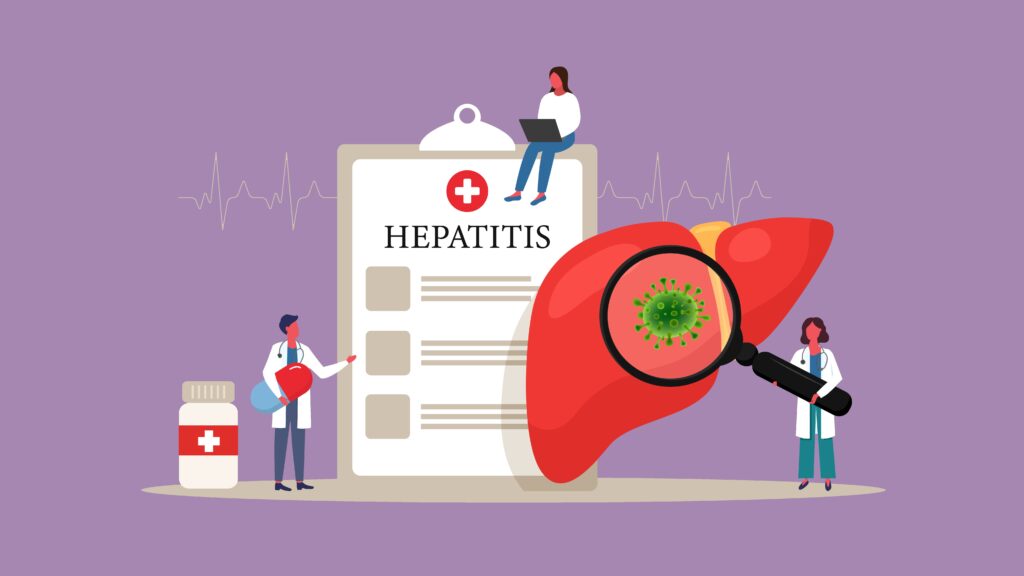Hepatitis can be said to be an inflammation of the Liver. It might be brought on by a virus, drinking alcohol, having certain medical problems, or even certain drugs. Treatment options differ according to the type and underlying reason.
Hepatitis is the term for a liver inflammatory disease. Hepatitis can have different origins, however viral infections are usually the culprit.
These comprise hepatitis caused by an autoimmune disorder and hepatitis resulting from pharmacological side effects, alcohol use, pollutants, and pharmaceuticals. When your body produces antibodies against your liver tissue, it can lead to an illness called autoimmune hepatitis.
Hepatitis A, B, C, D, and E are the five primary viral categories of the disease. For every kind of viral hepatitis, a distinct virus is to blame.
According to estimates from the World Health Organization (WHO), 354 million individuals worldwide are estimated to be living with chronic hepatitis B and C.
HEPATITIS A
Hepatitis A is the result of an infection with the hepatitis A virus (HAV). This type of hepatitis is an acute, short-term disease. It is caused by exposure to HAV in food or water.
HEPATITIS B
Hepatitis B virus (HBV) is the cause of the disease. This is frequently a persistent, chronic illness. According to the statistics, there are approximately 257 million cases of chronic hepatitis B globally. It is caused by contact with HBV in body fluids, such as blood, vaginal secretions, or semen.
HEPATITIS C
The hepatitis C virus is the source of hepatitis C (HCV). HCV is one of the most prevalent blood borne viral infections and usually manifests as a chronic illness. It is caused by contact with HCV in body fluids, such as blood, vaginal secretions, or semen.
HEPATITIS D
This is an uncommon kind of hepatitis that can only develop in tandem with a hepatitis B infection. Just like other strains, the hepatitis D virus (HDV) can induce inflammation in the liver; however, HDV cannot be acquired if hepatitis B is already present.
Nearly 5% of individuals with chronic hepatitis B worldwide are afflicted by HDV. It is caused by contact with blood containing HDV.
HEPATITIS E
The hepatitis E virus (HEV) is the cause of the waterborne illness hepatitis E. Ingesting feces that pollute the water supply is usually the cause of hepatitis E, which is mostly prevalent in places with inadequate sanitation.
Though generally acute, hepatitis E can be especially harmful for expectant mothers. It is caused by exposure to HEV in food or water.
Causes of Non-infectious Hepatitis
Alcohol and other toxins;
Drinking too much alcohol can inflame and damage the liver. Alcoholic hepatitis is another name for this. Your liver’s cells suffer immediate damage from the alcohol. It can eventually result in irreversible harm, thickening or scarring of the liver tissue (cirrhosis), and liver failure.
Medication abuse and exposure to chemicals are two other hazardous causes of hepatitis.
Autoimmune system response;
Sometimes the liver is attacked by the immune system because it believes it to be dangerous. This results in persistent inflammation, which can be minor to severe and frequently impairs liver function. Compared to men, it affects women three times more frequently.
Typical hepatitis symptoms
You might not have any symptoms until liver function is affected if you have a chronic form of hepatitis, such as hepatitis B or C. On the other hand, those who have acute hepatitis could exhibit symptoms soon after being infected with the virus.
Typical signs and symptoms of viral hepatitis consist of:
- yellow skin and eyes, which may be signs of jaundice
- abdominal pain
- dark urine
- pale stool
- flu-like symptoms
- loss of appetite
- unexplained weight loss
- Fatigue
Schedule an Hepatitis screening test on the Whispa App today!
Click here to get started







